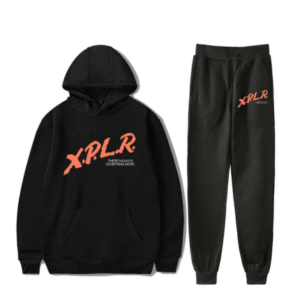
That perfect JPG image is sitting on your computer—a custom logo, a child’s drawing, or a clever graphic. You’re ready to see it stitched out by your Brother embroidery machine, but there’s a crucial step between your idea and the finished product. You need to find a reliable way to convert JPG to PES file. This process, known as digitizing, is what transforms a simple picture made of pixels into a sophisticated set of stitch commands your machine can understand. As we move through 2024, the options for this conversion have expanded, creating a clear divide between convenient free tools and powerful paid software.
Choosing the right path can mean the difference between a stunning, professional-looking embroidered piece and a tangled, frustrating mess. This guide will break down the best free and paid tools available today, giving you an honest look at what each option can truly deliver. We’ll explore the hidden costs of “free” and the real value of “paid” to help you make the smartest choice for your projects and budget.
The Fundamental Truth: You’re Not “Converting,” You’re “Digitizing”
Before we compare tools, it’s essential to understand the process. You cannot simply change a JPG file’s extension to “.PES” and expect your Brother machine to embroider it. A JPG is a raster image, a grid of pixels that has no concept of stitches, thread, or needle movement. A PES file is a complex set of instructions that tells your machine exactly where to move, what color thread to use, and when to make a stitch.
The act of converting a JPG to a PES file is really the act of digitizing. Software or a service is interpreting your flat image and creating a brand new, vector-based roadmap for the embroidery machine to follow. The quality of this interpretation is everything.
The Free Route: Quick Starts and Hidden Limitations
Free tools are incredibly tempting, especially if you have a one-off project or a tight budget. They typically fall into two categories: auto-digitizing software and online converters.
Standalone Free Software
1. Ink/Stitch (A Plugin for Inkscape)
Ink/Stitch is a powerful, open-source plugin for the free vector program Inkscape. It’s the most capable tool in the free category because it provides manual control.
-
How it works: You import your JPG into Inkscape, manually trace the elements to create vector paths, and then use Ink/Stitch to assign stitch types (satin, fill) to those paths.
-
Pros: It’s completely free and offers a level of control that mimics professional software. It’s a fantastic learning tool for understanding how digitizing works.
-
Cons: It has a very steep learning curve. You need to learn the basics of Inkscape first, and the process is entirely manual. This is not a one-click solution and can take hours for a single design.
**2. MyEditor (MyApparel)
MyApparel offers a free online PES editor that includes a basic auto-digitizing function.
-
How it works: You upload your JPG, and the software automatically traces it and creates a PES file.
-
Pros: It’s web-based, so no download is required. The interface is relatively simple.
-
Cons: The auto-digitizing results are often poor, with messy stitch paths and no optimization for fabric. You have very limited ability to edit the resulting file.
Online “Instant” Converters
A simple web search will reveal dozens of websites that promise instant JPG to PES conversion.
-
How they work: You upload your JPG, click a button, and download a PES file.
-
Pros: The process is fast and requires no technical skill or software installation.
-
Cons: This is where you find the lowest quality results. These converters often create unsewable files with thousands of unnecessary stitches, incorrect colors, and no underlay (the foundation stitches that prevent puckering). There are also potential security concerns with uploading your proprietary designs.
The Real Cost of “Free”:
While these tools don’t charge money, they cost you in other ways:
-
Time: You will spend significant time troubleshooting bad files.
-
Materials: You will waste thread, stabilizer, and fabric on failed stitch-outs.
-
Frustration: The results are consistently unreliable and low-quality.
The Paid Path: Power, Precision, and Professional Results
Paid software represents an investment in quality, reliability, and time savings. These programs are designed to create PES files that actually work.
The All-in-One Professional Suites
1. Hatch Embroidery
Widely regarded as the best value in the embroidery software market, Hatch offers an incredible balance of power and user-friendliness.
-
How it works: Hatch includes a robust auto-digitizing function that is far superior to free tools. More importantly, it provides a full suite of manual editing tools to clean up and perfect the design afterward.
-
Pros: Its “Auto-Digitize” function is a great starting point. The interface is intuitive, and it includes a massive library of built-in designs and fonts. You can easily adjust stitch density, pull compensation, and underlay settings.
-
Cons: It operates on a subscription model (or a large one-time purchase), so it requires a financial commitment.
2. Wilcom EmbroideryStudio
This is the industry standard used by professional digitizers and large shops.
-
How it works: Wilcom provides the most advanced set of manual digitizing and editing tools available.
-
Pros: Unmatched control and precision. It produces the highest-quality stitch files and can handle incredibly complex designs with ease.
-
Cons: It carries a very high price tag and has a steep learning curve. It’s overkill for a casual hobbyist.
The User-Friendly Champions
1. Embrilliance
Embrilliance is famous for its modular, easy-to-use platform. You can start with the affordable Essentials level and add more features as you grow.
-
How it works: Embrilliance allows you to easily assign stitch types to shapes. Its workflow is very straightforward for combining letters and simple graphics.
-
Pros: Low learning curve, fast performance, and you only pay for the features you need.
-
Cons: The auto-digitizing is basic. It’s best for working with pre-made designs or simple creations rather than complex photo-like JPGs.
The Hybrid Solution: Professional Digitizing Services
Sometimes, the best “tool” isn’t software at all. For a critical logo or a complex design, using a professional digitizing service is the smartest paid option.
-
How it works: You upload your JPG to a service like The Digitizing Corp, Amazing Designs, or a freelance digitizer. They manually create a custom PES file for you, usually within 24 hours.
-
Pros: You get a guaranteed, professional-quality file optimized for your specific fabric. No software to learn, no failed stitch-outs.
-
Cons: You pay per design (typically $10-$30), so it can become expensive if you have many designs.
The Real Value of “Paid”:
Paid options save you in the long run by providing:
-
Reliability: The file will stitch correctly the first time.
-
Efficiency: You save countless hours of frustration.
-
Quality: The final embroidered product will look professional.
-
Scalability: You can tackle more complex and rewarding projects.
How to Choose Your Path in 2024
Your decision should be based on your goals, budget, and frequency of use.
-
Choose a Free Tool If: You are a absolute beginner with one simple design, you have zero budget, and you don’t mind a high risk of failure as a learning experience.
-
Choose Paid Software If: You are a serious hobbyist or small business owner who embroiders regularly. The investment will pay for itself in saved materials and time. Hatch Embroidery is the strongest recommendation for this group.
-
Choose a Professional Service If: You have a single, important design (like a company logo) that must be perfect, and you have no desire to learn digitizing software.
Conclusion: Invest in Your Results
The journey on how to convert a JPG to a PES file is a clear case of getting what you pay for. Free tools offer a tempting entry point but often lead to wasted time and materials due to their technical limitations. Paid software and services, while requiring an initial investment, deliver the quality, control, and reliability that lead to truly beautiful embroidery.
In 2024, the most efficient path for anyone beyond a casual experimenter is to invest in a platform like Hatch Embroidery or to outsource to a professional service for key projects. By choosing a tool that respects the complexity of digitizing, you stop fighting with your machine and start creating the stunning, custom embroidery you envisioned.


